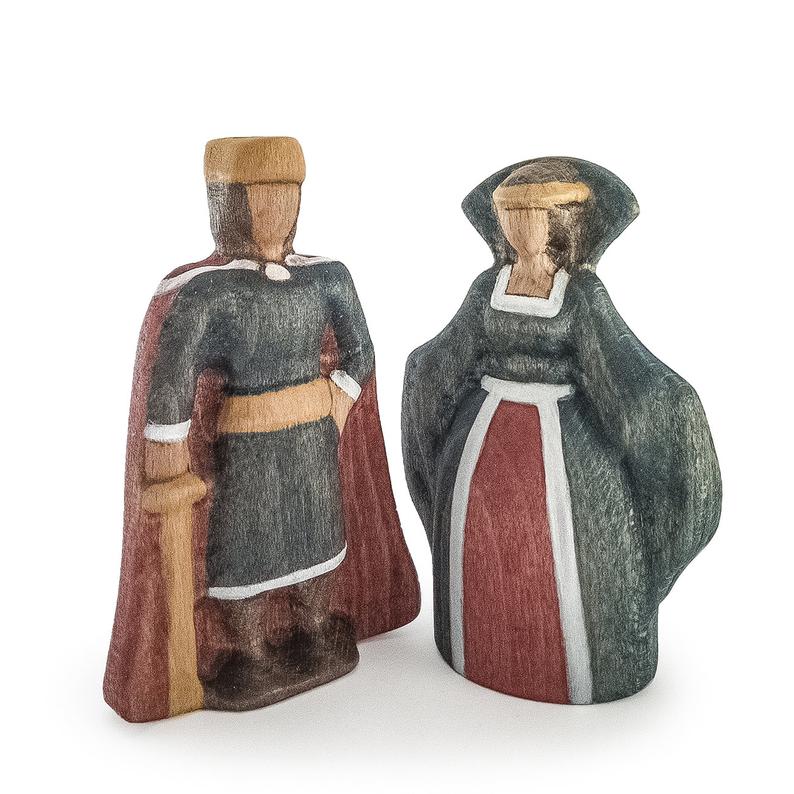When we design our toys, we try to strike a balance and find a sweet spot. There are several things we need to take into account – what is possible to carve out of wood, what will be sturdy enough, what the figurine will be used for, what children really need in order to engage in meaningful play, what is beautiful.
There are two important reasons why we have chosen to make our wooden toy figurines realistic:
First, research into children’s play shows that younger children need more realistic props in order to engage in symbolic play (in further articles we will write about the importance of symbolic / dramatic / pretend / small world play), while many older children may not necessarily need such props but tend to prefer them. Of course, there are children who are capable of engaging with not-so-realistic props at a younger age, and children who do not mind more abstract props – this is a matter of individual differences, but the general trend is quite obvious.
Second, there are parents (some of them followers of the Montessori method) who prefer to buy realistic figurines, but they find most of these made of plastic. Most of the wooden toy figurines on the market are more on the abstract side.
Third, through our design we are celebrating nature and trying to instill in children the feeling of awe and admiration, the sense of wonder it has instilled in us. We believe that modern children are quickly losing touch with nature, and we are concerned about this for more than one reason. In later articles we will elaborate on this subject.
However, we do not strive to make our toys super realistic. Instead, we focus on making them beautiful and artistic. Here are the reasons why:
First, we want to leave room for children’s imagination. Our toy figurines do not have pronounced facial features so children could project onto them the whole spectrum of moods, emotions and personalities and thus use the same toys in an endless number of scenarios. In later articles we will share our findings on the importance of open-ended play, which goes far beyond developing one’s imagination.
Second, we believe that art and beauty matter, and children should be exposed to them as early as possible. We are striving to depart from the chunky cartoonish aesthetic which is typical for many modern wooden toys. No matter how important cognitive development and education are, they cannot replace the subtle influence of art and beauty. We will share more on this topic in later articles.
We hope that the balance we have stricken will be meaningful to parents and educators who follow different educational philosophies, such as Waldorf, Montessori, Charlotte Mason, Reggio Emilia, etc. You can read more about our toys and how they align with these philosophies here.
